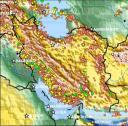[By Shideh] Interesting information on BBCPersian:
http://www.bbc.co.uk/persian/iran/story/2007/07/070723_ka-tehran-earthquake1.shtml
“در صورتی که زلزله تهران به خاطر فعال شدن گسل ری باشد، ۴۸۰ هزار ساختمان در تهران فرو خواهد ریخت، یعنی ۵۵ درصد ساختمانهای شهر. بیشترین تعداد ساختمانهای آسیب دیده در منطقه ۱۵ خواهد بود.”
“In the case of an earthquake on the Ray Fault, 480,000 buildings will collapse in Tehran: 55% of all the buildings in Tehran.”
In particular, I am glad that discussions af Tehran’s susceptibility to seismic hazard have increasingly become more of a concern to the public and to the media. As misleading as most popular news sources can be in terms of the accuracy of their scientific claims, they can have a strong influence on public awareness and education. Also, this can be especially useful when finding ways to have our ideas heard by policy makers in Iran. Media can not only have a great role in educating the public (or misleading them in many matters), it can be used to put policy makers under pressure for effective action. I think continuous articles and interviews on popular columns of famous news papers and magazines can have a profound impact, which we can have in mind as a possible way for implementing infrastructure related solutions later on. This may seem obvious, but we can start planning for it at some point.







Recent Comments